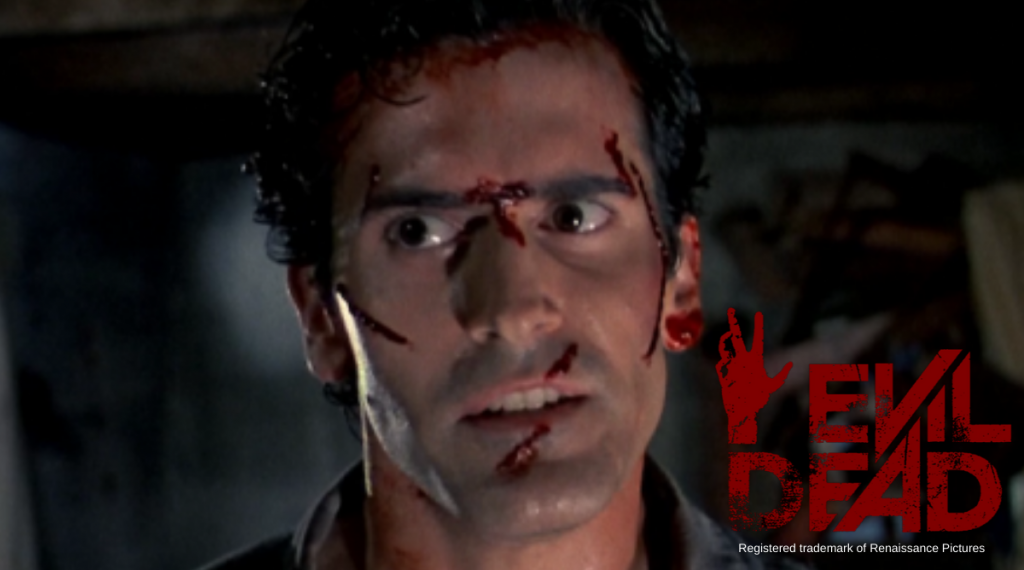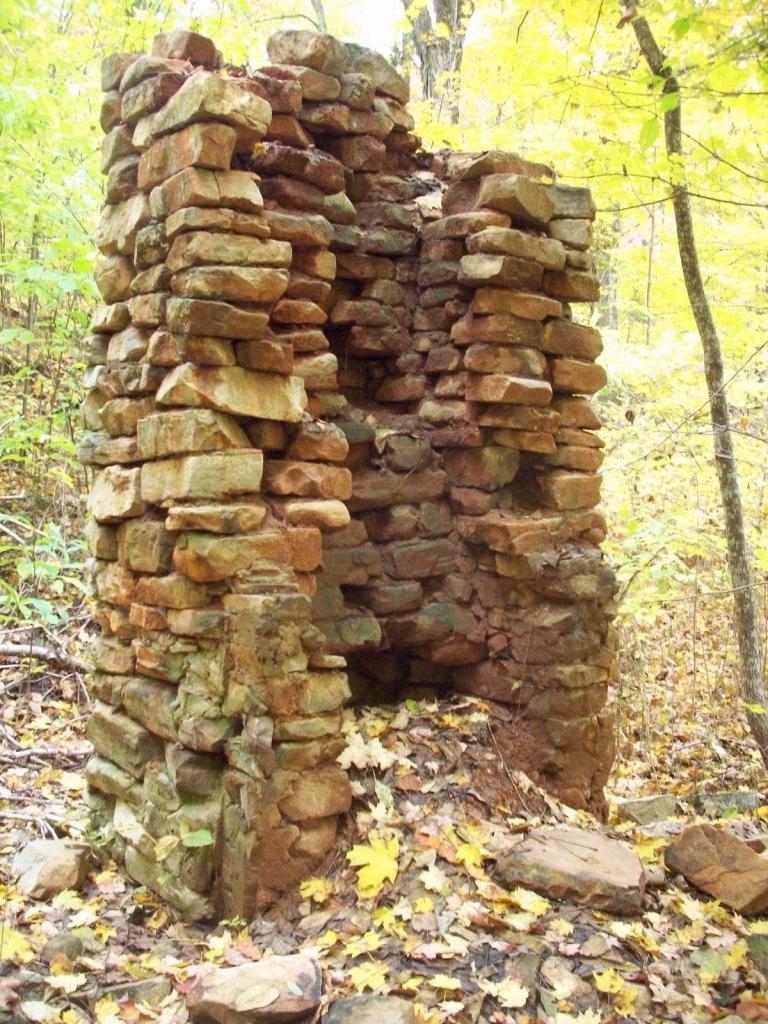
The original movie “The Evil Dead” was praised as one of the best horror films by the great Stephen King. Like many filmmakers in the early days of horror cinema, bringing “The Evil Dead” to the big screen was a bootstrap effort by a group of creative friends with big dreams (and non-existent production budget).
If you have watched “The Evil Dead” a hundred times (and still love it like we do) you will love some of the behind the scenes little known facts about how the film was created. While today, large production companies at Netflix and Hulu are buying up quality horror screenplays for original series or content, horror filmmakers had a tough grind in the 1970’s and early 1980’s to break into mainstream.
Here are four really cool things that horror movie fans may not know about “The Evil Dead” and how Sam Raimi made the film his launching pad to fame and fortune (with his high school buddies).
1. The Film Was Based on a Short Film Called “Within the Woods”
In 1978, Sam Raimi released a short film that was based on an earlier piece he had written called “Clockwork”. That piece was his original indie horror film and was only 7-minutes long, and the plot featured a violent home invasion.
During the 1970’s, horror movies were an obscure niche that most movie production companies would not touch. There was no real fanbase for horror or proof that a movie with a gory script would fill theater seats and be profitable.
Sam Raimi wanted to write and produce horror. But he had to show movie executives that it was a viable art form. When he produced “Within the Woods” he called on two of his friends, Bruce Campbell and Ellen Sandweiss, and the 7-minute movie was shot on a budget of $1,600 (U.S.). Sam Raimi and Bruce Campbell were best friends, attending high-school together in Michigan.
To get his proof of concept in front of moviegoers, Sam Raimi begged a local friend (who owned a movie theater) to show “Within the Woods” as a double feature with “The Rocky Horror Picture Show”. It screened well with audiences and drew the attention of investors. This allowed Raimi to fund his first full-length horror feature, “The Evil Dead”. The movie “Within the Woods” was bait for seed money; and it worked. Michigan doctors and dentists were some of their biggest investors.
Fans of “The Evil Dead” series will notice the original homage to the haunted woods in this early movie. Something Sam Raimi drew inspiration from when he wrote: “The Evil Dead” and the demonic influence inside the dark Tennessee forest surrounding the infamous isolated cabin. Hardcore fans will also recognize many of Raimi’s signature film editing tricks shown for the first time in “Within the Woods” and his soundtrack techniques to build suspense and terror.
2. The Cabin in Tennessee Was Actually Cursed?

The first full-feature movie “The Evil Dead” was filmed at an abandoned cabin in Tennessee, which actually did not have a dark history until Sam Raimi and Bruce Campbell did some storytelling, to support the promotion of the original movie.
Recognizing that horror fans liked a scary story based in real lore, Raimi and Campbell created a ghost story about a man named Emmett Talbot and his family. And a haunted and traumatized sole survivor of a massacre in the cabin named ‘Clara’ Talbot, who would return on stormy nights, wandering in a senile state. Raimi and Campbell also wrote that they could feel eyes on them the whole time they were filming on location. The things you will say to sell tickets; Campbell confirmed decades later that the story was promotional lore.
Today, the only parts that remain of the cabin where the original movie was filmed, is the stone fireplace and some of the chimney. After filming was done, Sam Raimi is said to have burned the cabin down, claiming that it was actually haunted. Perhaps the incantations used during the movie were legit (Raimi is a production purist) and he was afraid of what might actually have been released into the cabin, and the surrounding areas. The official ‘story’ is that the cabin was accidentally burned down by trespassers who were having a party at the location. We will never know.
The cast and crew of “The Evil Dead” have stated that they buried a time capsule in or near the fireplace of the old cabin, high in the Appalachian mountains. It is now private property, but thousands of horror fans apparently flock to the site in Morristown Tennessee annually.
Photo: Jess Bradshaw (Atlas Obscura)
3. The Film Ran Out of Funds and Bruce Campbell Saved the Day
In spite of every attempt to keep special effects organic (or homemade) in the movie, (oatmeal, guts made from marshmallow strings, and real Madagascar cockroaches from Michigan State University), funds ran out during production.
Bruce Campbell earned himself an Executive Producer title on the film, after he placed a large parcel of his family’s private land as collateral to borrow money to finish the project. The high school friends dreamed for years of making the film and becoming pioneers in a new emerging genre.
Sam Raimi reflected decades later that the hardest part of filming “The Evil Dead” was not set design, props, the fake-blood covered sticky floor (and equipment) or managing the actors and script. It was having to pause production and raise money several times to be able to finish the movie.
The stop-and-go flow of production created another problem. The movie originally began with a cast and crew of twenty (20) people, but the working conditions at the cabin and the authentic stunts actually got a few people injured. The original actors started leaving the movie and refused to show up on the set.
Thankfully, the heavily caked movie makeup required for the Deadites (possessed character) at the end helped complete the production. Both Campbell and Raimi asked friends to stand in for actors for the final scenes to wrap the movie. These stand-in friends and family are credited on the film as ‘Fake Shemps’ (a Three Stooges reference).
4. There Was Almost a Crossover With “Friday the 13th” and Jason Voorhees
Fans of the “Friday the 13th” movies may remember that at the end of ‘Jason Goes to Hell’ there is a scene where the Necronomicon is prominently featured. Did the book look familiar? The prop was developed to be an exact replica of the infamous book in “The Evil Dead”.
Personally, we think that crossover would have been cool. It would have opened the idea that all instances of demonic influence and supernatural emanated from the legendary ‘Book of the Dead’. Unfortunately, when the two creative teams came together there was a dispute, where they could not decide if Jason Voorhees would kill Ash at the end of the movie.
Since they could not reconcile the dispute, the partnership dissolved, and we’ll never be able to see Ash take a bite out of Jason with a chainsaw. Was Jason really a Deadite? We will never know.
Photo: Renaissance Pictures
Generation X gamer girl, marketing professional and closet horror writer. Lover of fast moving horror movies, slow moving zombies and historically based paranormal lore.

